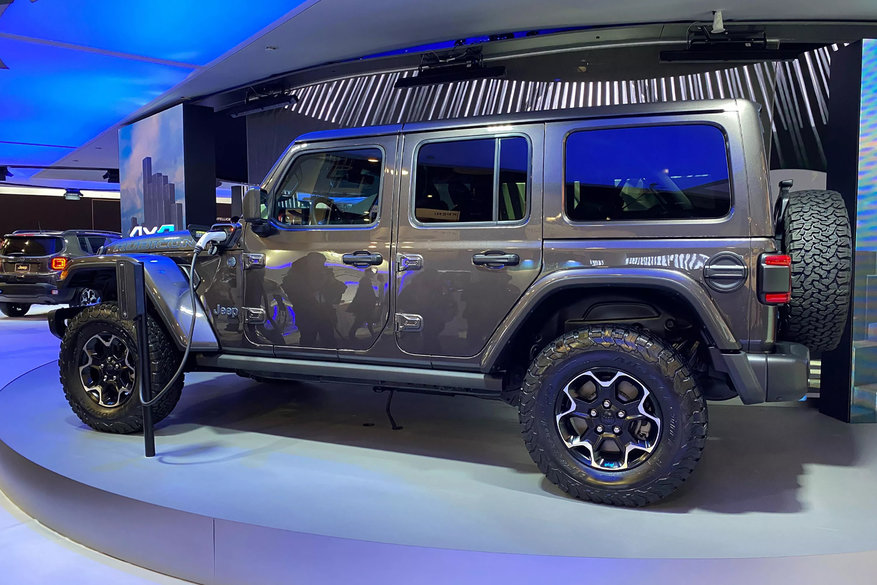by Matt Konkle
Torque Editor-in-Chief
As one of Fiat Chrysler Automobiles’ top selling vehicles over the past few years, Jeep Wrangler has certainly done its part to prop up the company’s bottom line. Now, FCA is tapping Wrangler for another important leadership role.
Electrification.
FCA recently announced it expects to have a plug-in hybrid Wrangler version into showrooms by the end of 2020, with hopes it leads the way for an entire Jeep electrified vehicle lineup by 2022.
"Jeep's icon the Wrangler will arrive on the market with a 4xe version that will be on the front line of our electrification strategy in North America," FCA CEO Mike Manley said last week during the automaker's annual general meeting. FCA said earlier this year that all electrified Jeeps will carry a unique ‘4xe’ badge.
The company is planning a global reveal of the new 4xe Wrangler sometime in the third quarter, Manley said, and it will arrive in U.S. showrooms before the end of this year. Europe and China availability should follow in early 2021, Manley added.
FCA did send a 4xe Wrangler to the Consumer Electronics Show in Las Vegas back in January, however no real specifications were released at that time. The only notable difference on that Wrangler was an added plug-in port beneath the driver’s side front mirror.
FCA originally planned to unveil specifications on the electrified Wrangler during the Geneva Auto Show back in early March, but the show was canceled due to the emerging coronavirus. Other subsequent auto shows, including New York and Detroit were also canceled, and FCA has yet to release any other information on the plug-in hybrid Wrangler.
One thing is clear, though. The Jeep Wrangler 4xe will not be a fully-electric vehicle. Instead, it will employ an electric drive motor and battery pack for short range drives, alongside a traditional internal combustion engine to supplement power at higher speeds and longer distances. Many insiders believe this means FCA will employ some version of its 2.0L four-cylinder eTorque turbocharged engine. The company could also choose its popular 3.6L Pentastar engine as well.
Fiat Chrysler currently utilizes a similar setup in its Pacifica minivan—combining that 3.6L Pentastar with a 16.0-kWh lithium-ion battery pack that fully charges in two hours on a 240-volt, 30-amp circuit, or in just over 14 hours using a 120-volt wall plug. This combination provides about 30 miles of electric-only range before swapping to gasoline power.
FCA’s Jeep Global Brand President Christian Meunier indicated earlier this year that the hybrid Wrangler, in its electric form, would be able to go from 0-60 mph in six seconds, and outperform the gasoline or diesel Wrangler.
“You’re going to get the most capable Jeep ever,” he said.
Of course, for the off-road crowd, Wrangler acceleration time isn’t as crucial as torque, and electrified vehicles certainly offer plenty to go around—as well as immediate engine response. Both features add up to a superior off-road experience when crawling on electric power at slower speeds for longer periods of time.
Additionally, high-voltage EV batteries would make a great external power source for those who plan on taking the Jeep on longer term adventures, as the battery can power a variety of electrical equipment options including compressors, power tools, lights and camping gear.
"Jeep electric vehicles will be the most efficient and responsible Jeep vehicles ever, providing absolute and quiet open-air freedom while taking performance, 4x4 capability and driver confidence to the next level,” FCA said earlier this year in a statement. “With greater torque and immediate engine response, Jeep electric vehicles will offer an even more fun-to-drive experience on the road, and more capability than ever off-road."





















